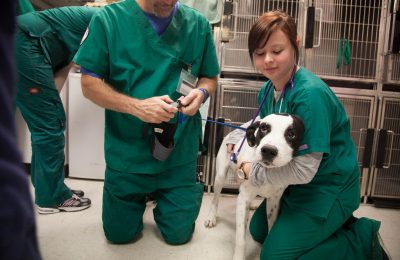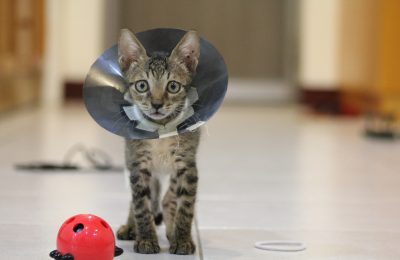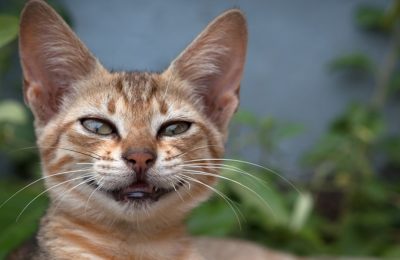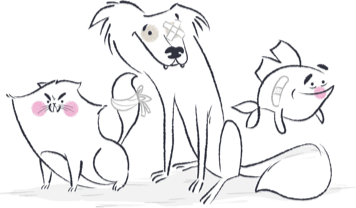Why do we like it?
- Pet-focused design. They created the journey for the pet, not for the parent. Yes, they are different.
- But the parent features too. They’ve considered how to minimise our stress, too.
- Staff matter. They know a burnt-out vet isn’t good for anyone, so they’ve designed the space to support the team.
- The environment matters.
- It’s well-equipped. The vets and nurses have the tools they need to provide the best care.
- Function doesn’t sacrifice form. Who says a clinic can’t be a creative place?
In April, veterinarian David Cuffe, finally realised his vision for creating a state-of-the-art animal hospital. Having searched for a suitable site for 12 years, David eventually bought a disused print works in Denmark Hill, South London and converted it into The London Animal Hospital (http://www.thelondonanimalhospital.com/), providing round-the-clock emergency and general practice veterinary services. The hospital reflects David’s passion for creating the best possible environment for pets, pet parents and staff, all whilst meeting sustainability goals.
Costing some £2.5 mn to design and build, every aspect of the hospital has been designed to meet the needs of pets and their parents living in Central London. Working in close collaboration with his long-standing practice manager and veterinary nurse Hannah Curwood, and award-winning architects alma-nac (http://www.alma-nac.com/), David set out to create a vastly improved vet practice: “My vision was to create a new benchmark in emergency care. By offering an independent, 24-hour, all year round, veterinary service, I aimed to provide a stress-free environment for pets and their owners. As it’s London based, it was critical that we took into account the needs of the pet parent, who is often juggling work and family commitments. By providing facilities such as onsite parking and dedicated quiet areas, we help pet parents to relax, which in turn reduces the stress for a sick animal, making it much easier to practice good medicine.”
Needs of sick pets at the heart of the design
By having a clear understanding of the differing needs of cats, dogs and exotics (rabbits, lizards guinea pigs etc), the hospital has been laid out to put animals at ease. As well as designing the hospital to optimise the flow of patients through it, features include separate cat and dog waiting areas, consult rooms with ‘hiding boxes’, and quiet, low lit, post-operative recovery rooms, all of which are aligned with the specific behavioural characteristics of different species.
In the cat waiting area, for example, benches have high sides. This lets cats in a basket face into the side so that they are not looking at other “scary people, dogs or other cats”. Cats typically hate looking at other cats, especially if they feel like they are trapped in a basket. Conversely, the dog waiting area is very open, as dogs are generally a lot more sociable.
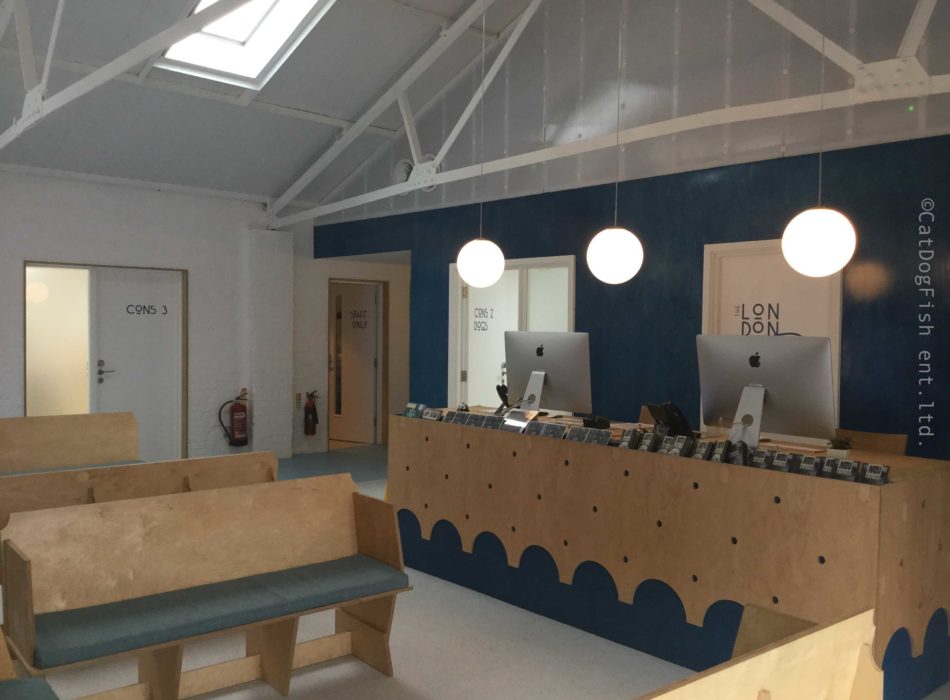
Separate, dedicated seating areas help to avoid stress for animals from the very start of their journey in the hospital
Staff trained to look for signs of anxiety
However, despite these initiatives, some pets will still be stressed. Reception staff are trained to spot the symptoms of anxious animals and respond accordingly. Typically, cats’ pupils will dilate, they will hunker down, have flattened ears and will crouch down, whereas dogs will show stress as trembling, tail between their legs, licking their lips and being openly aggressive. In these cases, staff will give blankets to cover cat baskets or provide a private room for dogs to wait in.
Putting cats and dogs at ease
From the staff coming out to the waiting room to personally greet patients, to tailored consult rooms, the overall aim is to help pets relax. In the cat consultation room, for example, there is a hiding box which cats can explore whilst the vet takes the medical history from the pet parent. “It’s important that the animal feels at ease during the consultation, so that we can make a more accurate diagnosis,” comments Hannah.

A hiding box in the cat consult room lets cats explore whilst the vet takes the medical history from the pet parent
De-stressing pet parents
Helping pet parents relax is a key part of the hospital’s role as reducing the anxiety of pet parents will ease the stress of their sick animals.
The hospital incorporates a variety of features and services such as on-site parking with a turning circle, an outdoor seating area (not only for parents but also for nervous dogs who don’t want to wait inside), a private rest room with a couch (where owners can even stay overnight), TV and coffee making facilities, and a separate entrance where distressed owners can exit without having to go back through the reception area. Insurance is always recommended for pet owners so that pets can be treated effectively without the owner worrying about the cost. Opening hours are designed to meet the needs of its mainly working clientele, with a 24-hour, all year round service.

A turning circle in front of the hospital helps to reduce the stress of parking, particularly if you’re bringing in a large breed dog. Photo courtesy of alma-nac and Jack Hobhouse
Latest technology optimises pet healthcare
Despite costing some £1 mn, the hospital employs the latest technology to enhance the health of pets in its care and provide a key point of difference from other surgeries in the area. This includes the first of its kind CT scanner just for animals in Europe, an ultrasound dental suite with dental x-rays as standard, a digital x-ray machine and a complete onsite laboratory, where almost all tests can be done on the spot. In addition, the use of a digital display board by Smartflow in the ambulatory care centre, provides high tech, paper free, 360 degree monitoring, enabling staff to keep track of admissions and treatments without disturbing recovering animals.
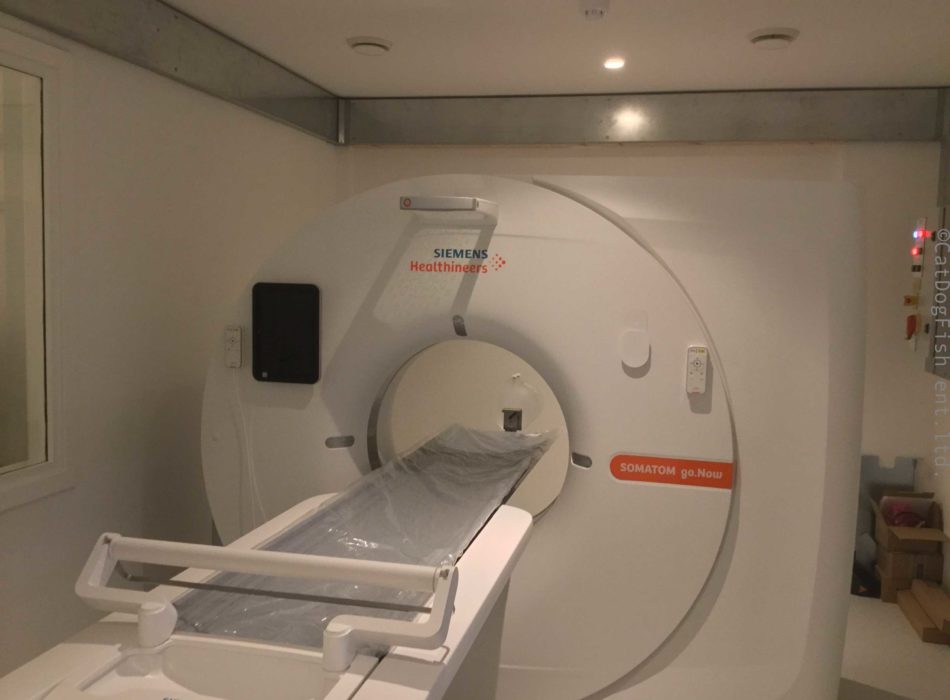
First of its kind in Europe - a CT machine for animals
Environmental impact helps to shape how the hospital runs
As well as creating a pet-friendly, high tech environment, the hospital also has strong environmental credentials, with alma-nac designing the building to be eco-friendly.
Copper has been widely used throughout the hospital on splashbacks and operating tables as it inhibits the growth of bacteria, whilst skylights, solar panels and rainwater collection drains, minimise energy and water usage. Heating and cooling systems use an air-source heat-pump and all finishes are solvent-free to prevent off-gassing. All of the fixtures and fittings are made from FSC approved plywood, rather than from chipboard or MDF.
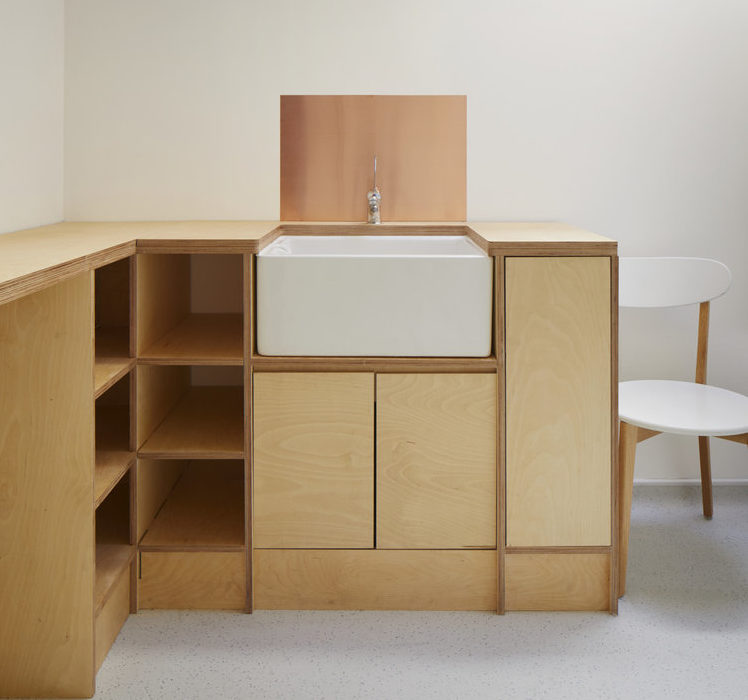
Minimising its impact on the environment plays an important role in shaping the design of the hospital. Photo courtesy of alma-nac and Jack Hobhouse
Promoting sustainable sources of food
One of the well-being initiatives promoted by the hospital is the sale of sustainable pet food. This includes ethically farmed packaged food, and raw, frozen food, which is sourced from the UK. The raw food consists of a ground up mixture of bone and meat, and a very small proportion of botanicals such as fruit and vegetables. It is free of grain.
Within veterinary circles, feeding cats and dogs with raw food is a contentious topic. There is little in the way of scientific evidence to back up its benefits and there are public health concerns from the potential spread of salmonella and other pathogens. However, The London Animal Hospital believes that raw food can provide a positive benefit to a pet’s diet, so long as recommended hygiene measures are adhered to and that it provides nutritional balance. David comments:“We only sell raw food which is formulated on providing everything that a cat or dog needs and has been approved by a veterinary nutritionist. We believe that raw feeding is very good for a variety of conditions, especially for animals which have intestinal or skin disorders”.
Enhancing the wellbeing of staff
With a staff of 15 nurses and vets, working shifts throughout the week, providing good working conditions is an important component to the success of the hospital. From couches in the rest area, to an overnight room, well-resourced kitchen, good holidays and a higher than average salary, David has been very keen to alleviate stress to attract and retain the best staff.
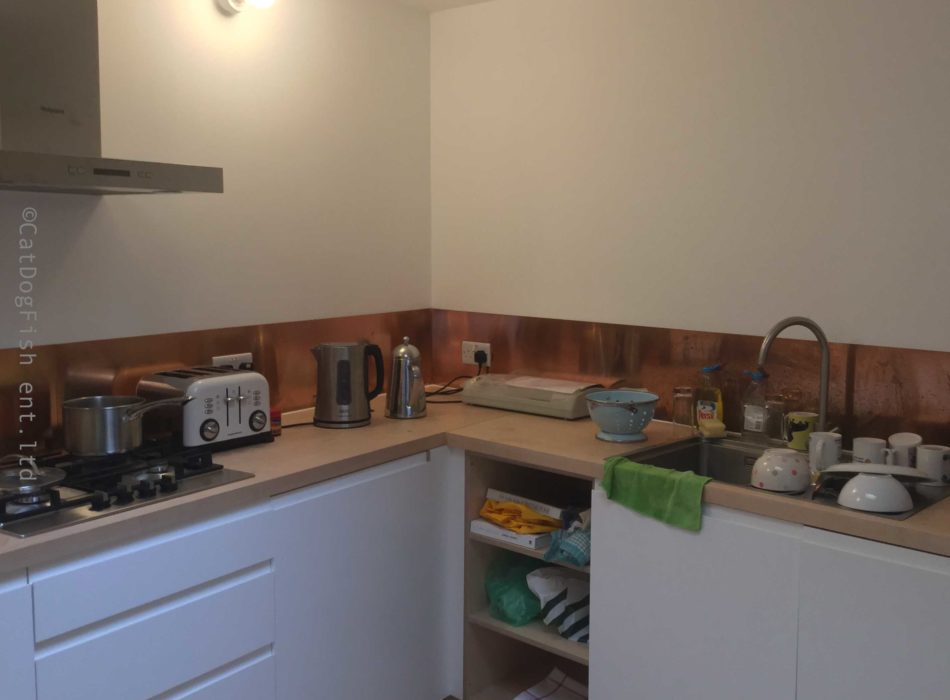
Providing good facilities for staff helps to improve morale and reduce stress
Keeping morale high is particularly important given that veterinary medicine is renowned for being one of the most stressful professions. As we recently highlighted in our interview with Dr Chris Turfnell (https://catdogfish.com/challenges-faced-veterinary-profession-interview-dr-chris-tufnell/) “one of the unfortunate outcomes of a vet’s lifestyle is that the pressures of out of hours working, that ‘always on’ feeling and growing expectations from the general public, can become overwhelming. This can lead to feelings of despair and in some extreme cases, suicide. Indeed, mental health is now a major concern for the profession, with the rate of suicide three to four times higher than in the general population as a whole.”
Creative design enhances core ethos
As well as creating an efficient environment for pets, their parents and staff, David also wanted to create one which is relaxing for clients and provides “exemplar facilities for the staff”. Architects alma-nac designed the interiors “to feel welcoming, while being hardwearing and meeting clinical requirements. The rich blue stained plywood is offset against crisp white walls and elegant plywood furniture, all designed by alma-nac.”
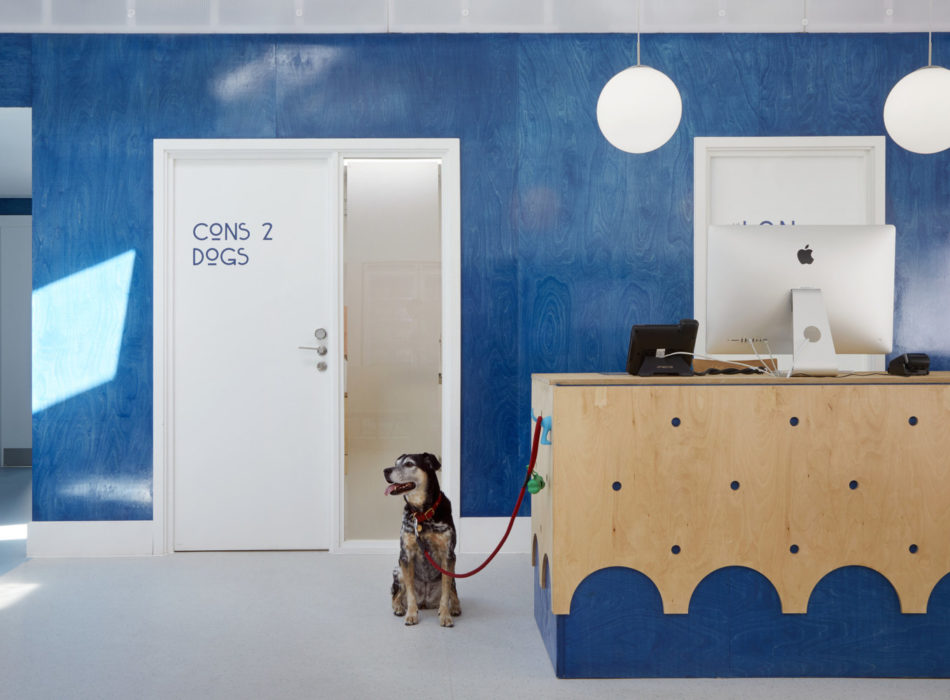
An eye-catching design combining rich blue stained plywood with crisp white walls helps to create an inviting, yet efficient, interior. Photo courtesy of alma-nac and Jack Hobhouse
The outstanding design of the building has resulted in it being shortlisted for the upcoming FX International Interior Design Awards (http://www.fxdesignawards.co.uk/#shortlist), for the best public sector building of the year and for the AJ Architecture Awards 2017 – Health and Wellbeing Project of the Year (https://awards.architectsjournal.co.uk/shortlist-2017).
We’re delighted to announce that David Cuffe has recently joined our panel of experts https://catdogfish.com/about-us/pet-health-and-wellbeing-experts/.
Give your favourite veterinary practice a shout-out if it provides best-in-class care and facilities for its patients and staff.


